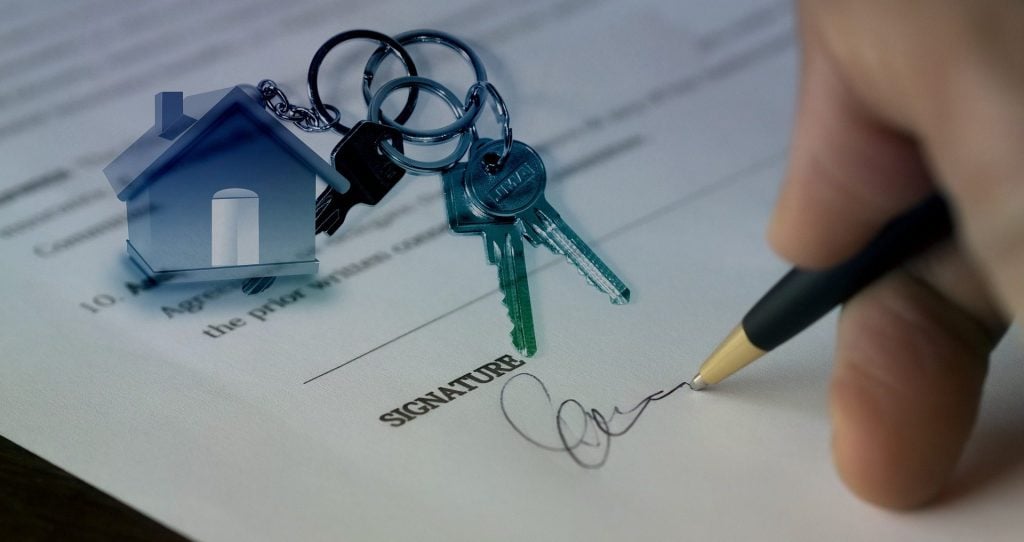BLOGS
Transfer Certificate Of Title Requirements In Philippines
Do you want to own the land you saw in the list of house and lot for sale? You may think having money to purchase a house is enough, but it’s way more complicated than that. Owning a house means you need to have a transfer certificate of title or land title.
A land title is the best evidence you can present to others that you own your property. You do not have property ownership if you have not presented any requirements to the proper authorities to prove that it is yours.
What Do I Need to Know in Owning Lands in the Philippines?
Private lands in the Philippines can only be owned by Filipino citizens and corporations, as expressly mentioned in the 1987 Philippine Constitution. However, this does not absolutely prohibit foreign nationals and corporations. Foreign nationals can only acquire private land through hereditary succession, as provided under the law. For foreign corporations, the Foreign Investments Act (FIA) provides that foreign corporations may be considered Filipino-owned corporations if the minimum capital stock owned by Filipinos is 60%.
Another alternative for foreign nationals to own private lands in the Philippines is by purchasing condominiums under the Condominium Act, as long as the units are not owned by more than 40% of the foreigners. Some luxury condominiums accommodate foreigners who want to experience Brittany living, such as Brittany Corporation.
Foreign nationals or corporations may also lease lands. The Investor’s Lease Act states that any foreign investor investing in the Philippines may lease private lands “which shall comprise such area as may reasonably be required for the purpose of the investment, but, to the Comprehensive Agrarian Reform Law and the Local Government Code.”

Why is a Having a Land Title Important?
A land title is essential to prove that you own the legal owner of the property. One requirement to complete ownership of the land is having a transfer certificate of title.
Every home buyer is expected to know the process of obtaining a land title, which includes land registration, payment of registration fees, etc.
What Do I Need to Do to Acquire a Transfer Certificate of Title?
With several house and lot properties for sale, you are more than excited to own land and build a house of your own. But before anything else, you need to get your hands on some tedious work. If you are a first-time homebuyer, here is the process for acquiring land title Philippines:
Step 1: Prepare the Required Documents
Prepare the original copy and have at least two photocopies of the following documents:
-
Deed of Conveyance, Deed of Absolute Sale, Extrajudicial Settlement of Estate, or the like
Depending on how the land is conveyed to you, you need to have at least eight (8) copies of these legal documents. You will also need to prepare an acknowledgment receipt or official receipt of the amount from the seller.
Once you have gathered them together, make sure that all of the signatories’ names match their tax identification numbers. Complete names and signatures should exactly match the BIR TIN, the title deed, and identity papers.
The Deed of Conveyance and the Acknowledgment Receipt must be notarized.
You need to produce eight copies of the legal documents because you have to submit them to the following:
- Seller
- Buyer
- Notary Public
- Seller’s Real Estate Broker
- Buyer’s Real Estate Broker
- Local government agencies, such as the Bureau of Internal Revenue, Treasurer’s Office, Assessor’s Office, and Registry of Deeds
- Homeowner’s Association or Condominium Corporation as reserve
If you are a foreign national or foreign corporation, you need to have a property advisor before going through the land title transfer process. Property advisors guide you in determining the property’s selling price. They will also help you prevent fraud, such as being issued a fake land title.
-
Photocopies of Valid IDs of the signatories on the
The photocopies of the valid IDs must have three signatures from the signatories. The IDs must be valid identification documents issued by an official government agency displaying the bearer’s photo and signature.
-
Official Receipt of the Deed Notarization
-
Certified True Copy of the Title
Have three copies of the certified true copy of your land title. The Registry of Deeds will provide more information on this requirement.
-
Certified True Copy of the Latest Tax Declaration
Request for a copy of the latest tax declaration, but make sure that the records are requested for “BIR Purposes.” This document is issued by the city or municipal assessor. Also, take note there are other tax filings for the title transfer.

-
Tax Clearance
A tax clearance is a proof that the lands and improvements are included in the payment of real property tax. To get a tax clearance, submit the following documents:
- Official receipts of real property tax payments
- Previous Tax Clearance, if applicable
- Notarized or Apostilled Special Power of Attorney and valid ID, in case the person requesting the tax clearance is not the registered owner
-
Clearance from the Homeowners Association (HOA) or Management Certificate
These certificates prove that the seller paid HOA or condominium fees and it also shows if the property was rented out or not. You need to notarize this document.
-
Marriage Certificate for both parties
-
Birth Certificate
Birth certificates are required in case the property is donated or in cases of Extra-Judicial Settlement to verify the relation between the donor and the donee.
-
Certificate of No Marriage (CENOMAR)
This document is required if the property buyer or seller is single. Cenomar’s validity is only six (6) months, so make sure to submit the latest one.
-
Certificate of No Improvement for lots-only sale
Obtain this form from the assessor’s office.
-
Photos of the Property
Take 3″ x 5″ colored photos of the house along with the house number. If it is a luxury condominium unit, include photos of the front door with the door number, and the name of the building.
-
Location Map
Provide a Google Map printout of the location of the property.
-
Owner’s Duplicate Copy of the Title
A transfer certificate of title is required for house and lot properties for sale. For luxury condominium units, you need to present the condominium certificate of title.
-
Special Power of Attorney
A special power of attorney comes in handy when you want someone else to process the papers for you. The Revenue District Office, Treasurer’s Offices, Registry of Deeds, and other local government unit agencies will need this.

It is crucial that the person signing the special power of attorney must be the seller.
Step 2: Submit the Documents for Tax Computation
Once you have all of the legal documents mentioned in Step 1, you can now submit them to the Bureau of Internal Revenue District Office for tax computation. The BIR official will compute the Capital Gains Tax (BIR Form 1706) and the Creditable Withholding Tax (BIR Form 1606).
Step 3: Pay the Capital Gains Tax and Documentary Stamp Tax
Once your papers have been calculated, it’s time to pay the necessary taxes. Go to any accredited BIR-authorized agent bank (AAB) and pay the Documentary Stamp Tax (DST), Value-Added Tax, and Capital Gains Tax.
You may also need to prepare the following papers:
- Computation sheet signed by the BIR
- Deed of Conveyance indicating the ownership transfer from the previous owner or seller to the new owner or the buyer
- Three (3) copies of duly accomplished BIR Form 1706
- Three (3) copies of BIR Form 2000-OT
Pay the capital gains tax and documentary stamp tax within 30 days after the notarization to prevent any penalties.
Step 4: Get a Certificate Authorizing Registration (CAR)
The Certificate Authorizing Registration (CAR) is a required document under the National Internal Revenue Code that confirms all taxes on the property sold has been paid and settled.
Provide the papers stamped by the BIR to claim the CAR:
- Original copy of the Deed of Sale
- Duplicate copy of the Transfer Certificate of Title
- Original copies of the DST and the CGT forms
- Tax Declaration Certificate for land and improvement
Once you submitted this, you will receive two (2) copies of the CAR in blue and brown copies – the blue copy for transfer and the brown for your personal copy.
Step 5: Submit the CAR to the Local Treasurer’s Office
Submit the blue copy of the CAR to the Treasurer’s Office and pay the Transfer Tax within 60 days. Once paid, return to the BIR and have your Deed of Conveyance stamped, marked, and signed by the BIR.
Step 6: Register your Property with the Registry of Deeds
After paying the transfer of title fees and taxes, it’s time to register your property. This registration process is the most important step to reflect that you are the new registered owner of the property.
Submit the following documents to the Registry of Deeds:
- Birth Certificate
- Certificate of No Marriage (if not married)
- Marriage Certificate
- Certified True Copy of the Original Land Title
- Photocopies of the ID of signatories
- Deed of Absolute Sale
- Deed of Conveyance
- Latest Tax Declaration
- Official Receipt of the Notarized Deed of Sale or Conveyance
- Tax Clearance
After submitting these requirements and paying the registration fee, wait for at least two weeks to have the new land title under your name.
Step 7: Apply for a New Tax Declaration Certificate from the Assessor’s Office
Obtain a new tax declaration from the local assessor’s office after receiving the new title from the Registry of Deeds. Under this new tax declaration, the new owner shall be responsible and accountable for the payment of real property tax, transfer of title fees, and other assessment costs.
Submit the following documents:
- Copy of the old title under the property seller or previous owner
- Business Permit, if the previous owner is a corporation
- Certified True Copy of the New Tax Declaration
- Duplicate copy of the Certificate Authorizing Registration from the BIR
- Photos of the property bought
- Tax Clearance

Other Things You Need to Know About Getting A Trasfer Certificate Of Title
When looking for house and lot properties for sale, you need to be cautious when making transactions in title transfer to prevent fake land titles.
Document Your Transactions
As a property buyer, you need to know that there are formalities in the sale of real property. An absolute sale of real property must be made through a public instrument.
A transfer land title in the Philippines must be notarized in the place where the property is located. If the land title document, such as the deed of absolute sale or deed of conveyance, is executed and acknowledged outside the Philippines, you must present it to the Philippine Embassy for authentication.
Lastly, the Land Registration Authority needs your BIR-issued certificate authorizing registration before you can have a new transfer land title certificate under your name.
Be Diligent in Paying Taxes and Other Expenses
House and lot for sale are considered capital assets, and capital assets are subject to a capital gains tax of 6% of the fair market value of the property or selling price, whichever is higher.
You must also need to pay your transfer of title fees and other transfer taxes on time to prevent any delays and issues with the validity of your property ownership.
Final Thoughts
Now that you know everything about property ownership, it’s time to search for your new home!
Experience Brittany living like no other by checking out Brittany Corporation’s most beautiful houses in the Philippines. We offer house and lot for sale at a reasonable price, with a breathtaking view and accessibility to all areas suitable for your lifestyle.
If you want to know more about what Brittany living is like, feel free to visit Brittany Corporation’s website, LinkedIn, and Youtube accounts.
Suggested Read: How To Ensure That Your Land Title Is Real And Clean
Suggested Read: Taxes When Buying A House In The Philippines
Suggested Read: How Much Does It Cost To Buy A Resale House
Suggested Read: Licenses And Permits For Your Business
Suggested Read: Tips On Buying A Lot Only Property
















